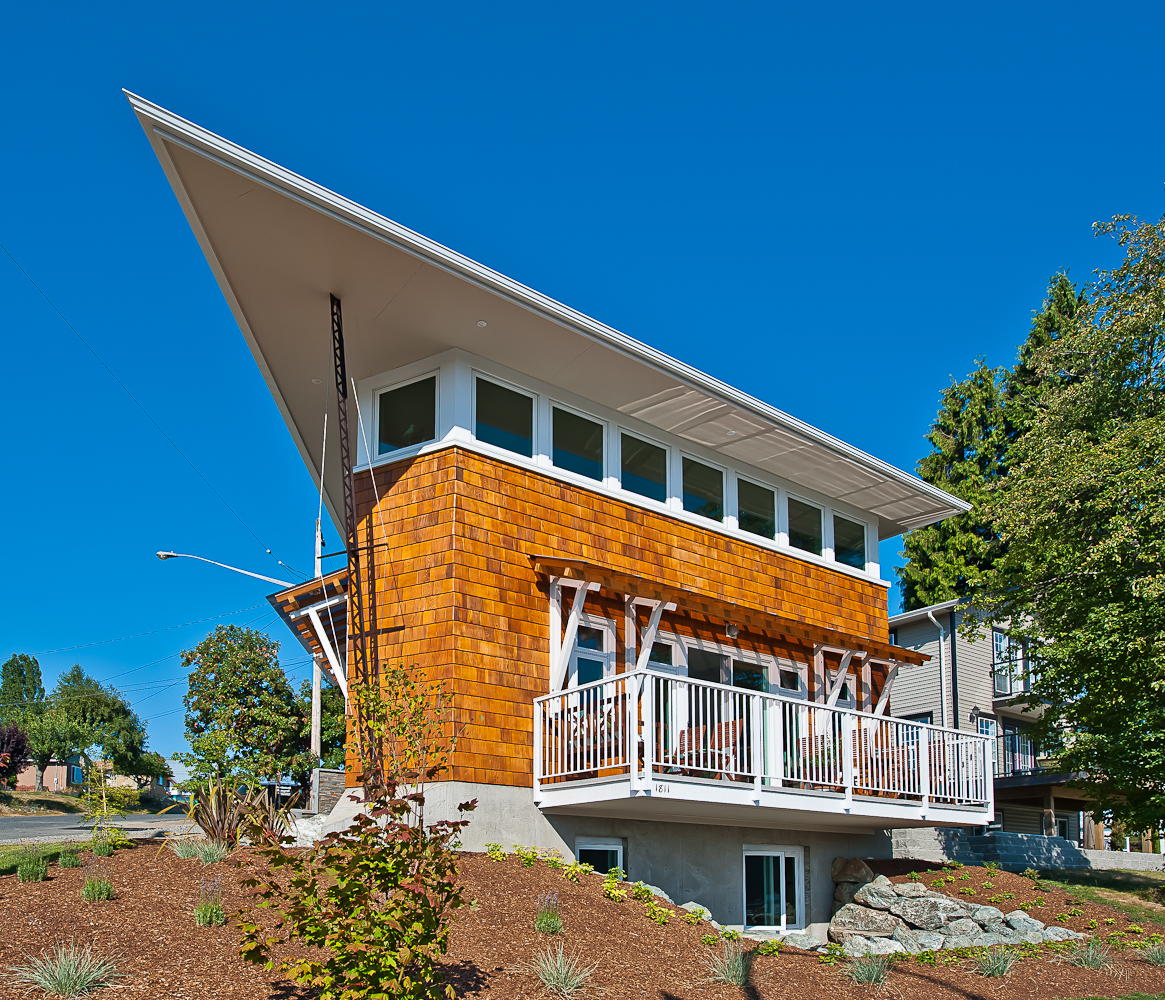Community Education and Events
Every year, the Regional District of Nanaimo organizes community events, offering residents the opportunity to learn from skilled professionals through a series of engaging and informative sessions. Join us to discover practical insights on energy-efficient renovations, reducing consumption, the benefits of electric vehicles, and constructing climate-resilient, comfortable homes. Whether you're a homeowner or renter, these events cater to everyone interested in reducing their carbon footprint and creating a more sustainable future. Stay connected through social media for the latest updates, and check out the registration options below to join these educational events.
Join the Regional District of Nanaimo and industry experts for a series of free in-person workshops and online webinars this fall! Dive into topics such as draft proofing your home, home upgrade rebates, reducing energy consumption, and creating climate-resilient, cozy homes. Stay updated by following us on Facebook, Instagram, and Twitter, and don't forget to register using the options provided below.
In-person Workshops
The Regional District of Nanaimo has partnered with City Green Solutions and Carbon Wise to deliver a series of free skills-focused workshops teaching RDN residents about Draft Proofing their homes. This 2-hour workshop will introduce participants to key knowledge, resources, and skills needed to complete effective DIY Draft Proofing at home.
Learn from industry experts how to locate and fix draft issues, how to weather strip your door or window, air-sealing techniques, and explore interactive displays to get hands-on experience.
These free events have a limited capacity, available on a first come first served basis while seats remain available. To register, please email sustainability [at] rdn.bc.ca or call 250-390-5422.
Date and time |
Location |
|
January 26, 2023 3 p.m. to 5 p.m. |
Qualicum Beach Civic Centre 747 Jones St, Qualicum Beach |
Past Webinars
Join the RDN, Plug In BC and the CleanBC Community Energy Coach Program for a series of FREE online webinars this fall. Explore the extensive rebates and financial incentives offered for various energy-efficient renovations, learn ways to reduce your energy consumption, understand the costs and benefits of owning an electric vehicle, and discover how to construct a climate-resilient and comfortable new home.
View the recordings below.
Date and time |
Title |
Description |
|
November 16, 2023 6 p.m. to 7 p.m. |
Owning and Driving Electric Vehicles in the Nanaimo Region |
B.C. drivers continue to go electric, and electric vehicles are an increasingly common sight in the Nanaimo area. So, what is it like to drive an electric vehicle on Vancouver Island, and how does it work when travelling around the rest of B.C.? Michael Stanyer is a Vancouver Island resident and drives electric vehicles across the province through his work at Plug In BC. This presentation will cover common topics like the types of charging stations used at home and on the road, the technologies that make EVs increasingly better for long-distance travel, winter use, and the cost-benefits of going electric.
View Recording
|
|
November 28, 2023 12 p.m. to 1:30 p.m. |
Energy Efficiency Upgrades and Rebates |
There are many energy-efficient upgrades you can do to improve the overall energy efficiency of your home! Join friends and neighbours in this one-hour webinar and learn about each energy-efficient upgrade, their benefits, the house-as-a-system concept, as well as what rebates and other incentives might be available. Did you know?
This webinar is offered by the CleanBC Community Energy Coach Program. If you have questions about this webinar or for more information on engaging a community energy coach or to get started with accelerating retrofits in your community, contact CEC [at] betterhomesbc.ca (CEC[at]betterhomesbc[dot]ca). The webinar will be approximately 1-hour long followed by a short Q&A period. To attend, you must register. It will be presented via Zoom, a virtual meeting platform. You will receive an automatic confirmation email upon registration and a reminder one day prior. View Recording |
- Past Webinar Recordings
-
Built to Last: Building your new home for comfort and climate resilience
Home Energy Efficiency How-To: Rebates and Renovations
Considering a Heat Pump?
Driving Electric in the South and Central Island:
Videos from previous Green Building Programs:
>
- Past Events
-
Please visit the pages in this section for links past events featuring Green Buildings in the RDN. If you are looking for event information not found here please contact us at sustainability [at] rdn.bc.ca (sustainability[at]rdn[dot]bc[dot]ca), 250-390-6510.
- Examples of Green Building Practices
-
Examples Green Home Renovation
The Green Home Remodelling Series was originally created by the Seattle Department of Planning & Development's City Green Building Program and later was adapted by the Vancouver Sustainable Development Program. Please check the City of Vancouver's website for the complete series on Green Home Renovation.
Vancouver Island University's Centre for Shellfish Research Deep Bay Field Station This field station is designed to achieve the Leadership in Energy and Environmental Design (LEED®) Platinum standard, the highest level of this rating system. Currently under construction, this project will take advantage of the waterfront site and use an ocean loop geoexchange system for heating and cooling. The field station will demonstrate how to minimize environmental impact in the coastal zone and become a significant teaching tool for the university and the public.
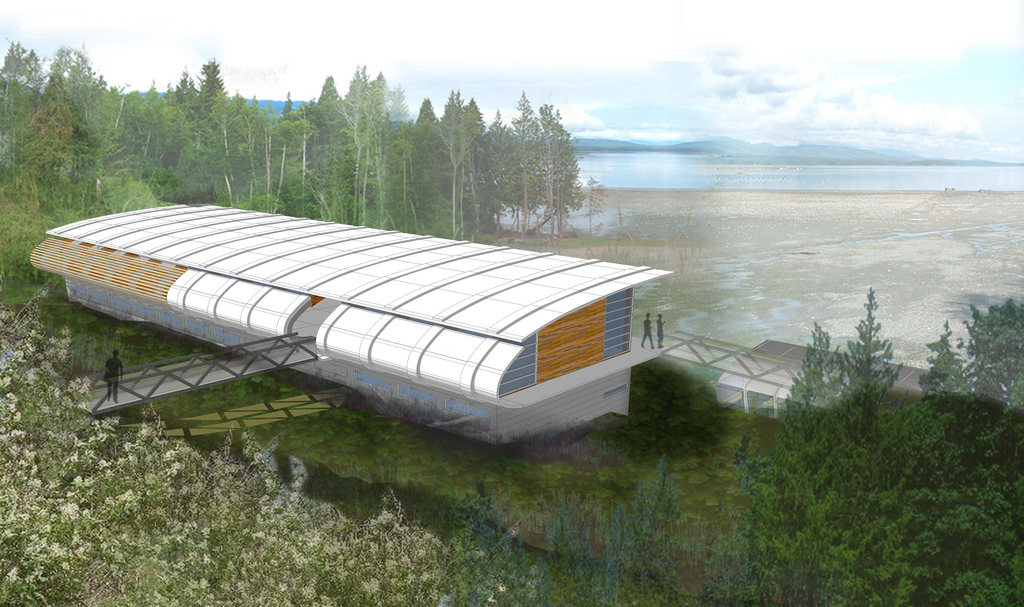
E-Cube House The E-Cube housing system has twice the energy efficiency of comparable houses built to standard code requirements. This house is constructed with superinsulated walls and roof using prefabricated Structural Insulated Panels (SIPS) and features a lively green roof, thermal solar collectors for domestic hot water pre-heating, photovoltaic solar collectors that generate electricity on-site and a rainwater harvesting system.
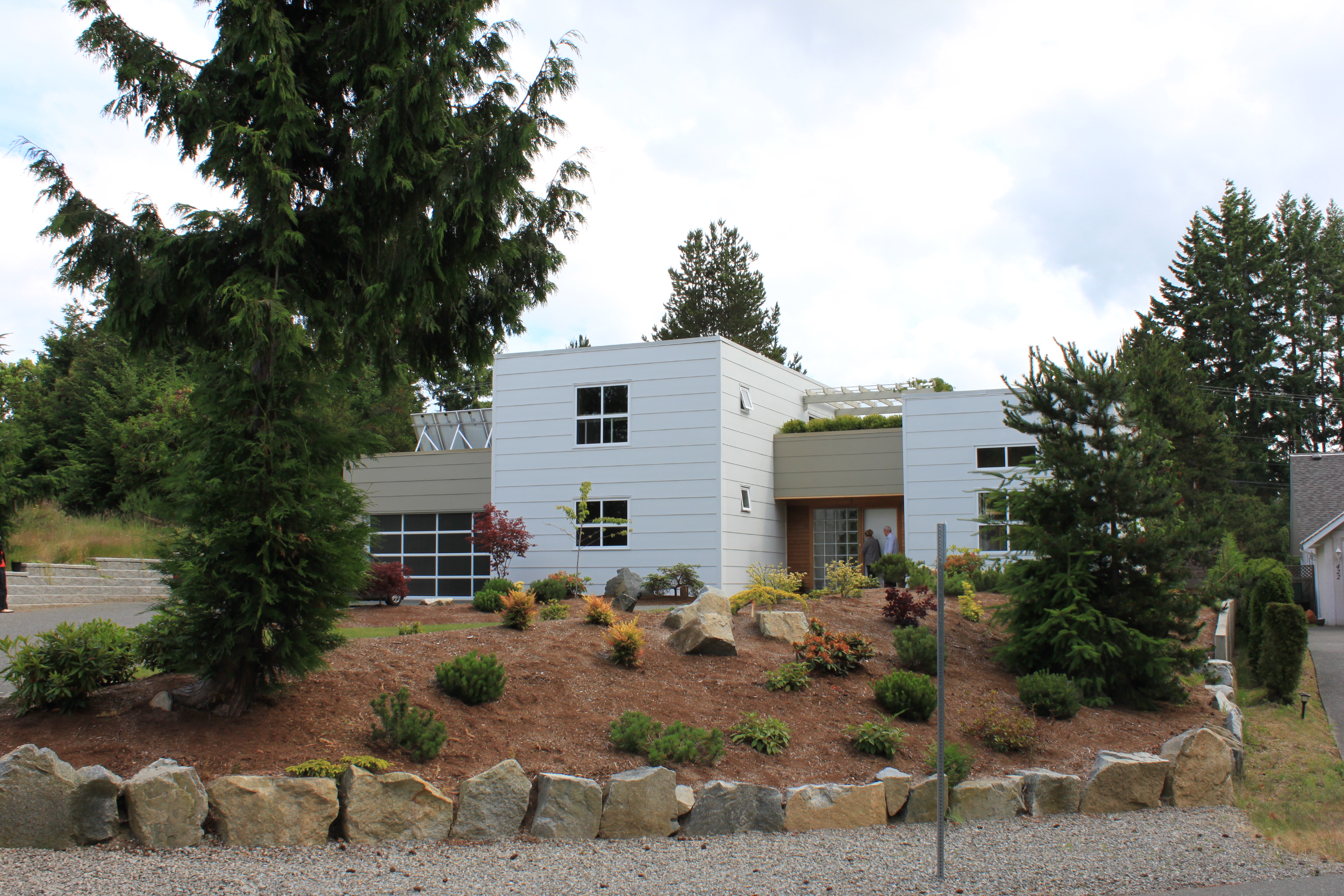
Green building doesn't always mean expensive, as demonstrated by this unique adaptation of an old manufactured home. This house has been transformed from a single-wide mobile home into a larger, highly energy-efficient three-bedroom home through a unique double wall framing technique. The house uses windblown trees milled locally, natural materials, low-VOC paints, and a greywater system. The owners phased the construction and renovation to work around their busy schedules. The result is an eco-friendly home at one-third the cost of traditional construction.
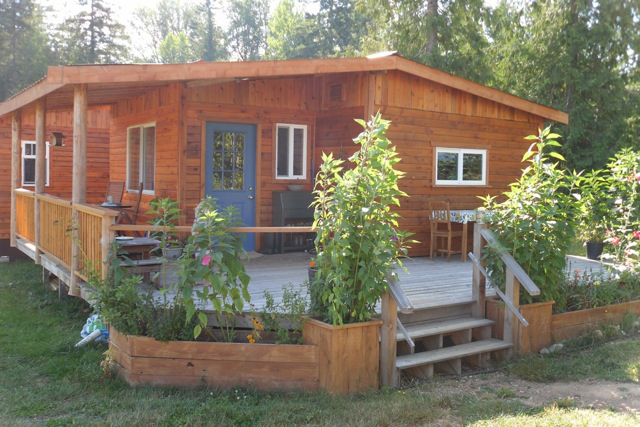
RDN Admin and Transit Buildings Guided by an integrated design process, the RDN Administration and Transit Building Expansion Project team worked together at the outset of the project to identify opportunities to optimize building performances. This process has led to the realization of many important features such as rooftop heat pumps that control heating and cooling, Heat Recovery Ventilators to supply outdoor air to the new offices, individual thermostats and operable windows in each office to allow personal control of the indoor environment, solar hot water system on the transit building for domestic water heating and a living roof that protects the roof membrane, supports biodiversity, and manages stormwater runoff.
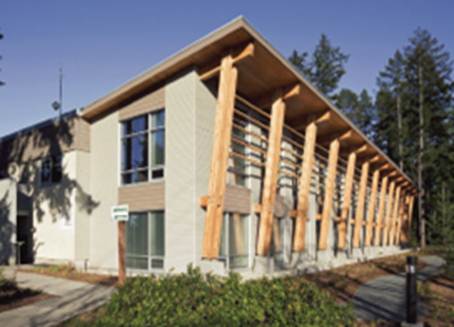
Island Westcoast Developments Office This commercial office building achieves a high level of energy efficiency through a combination of measures including a ground source geoexchnage loop system for space heating and cooling, incorporation of daylighting and natural ventilation, solar hot water system for domestic water heating and real-time performance monitoring system. The accessible green roof serves the practical function of managing stormwater runoff and also provides a pleasant social space for staff. Construction materials and finishes are carefully selected to improve indoor environment quality while minimizing environmental impacts. This project is aiming to achieve the Leadership in Energy and Environmental Design (LEED®) Gold standard.
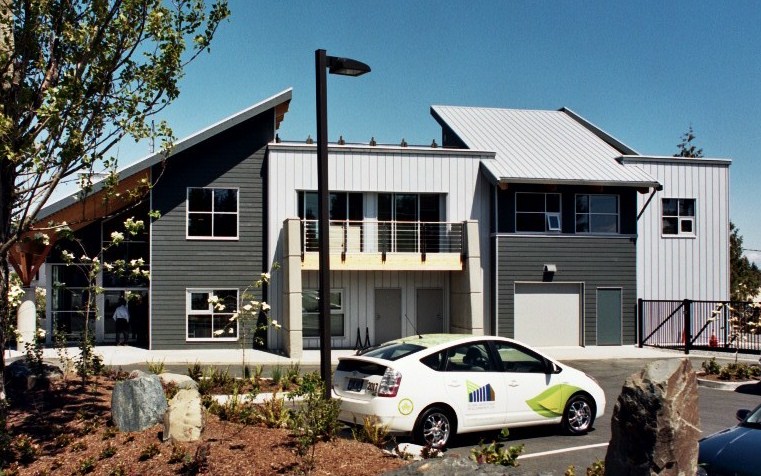
12 Cubed Homes This 12-by-12-feet micro home is a living example of efficient use of land and material resources. At the same time, it demonstrates that compact living can be comfortable, convenient and affordable. 12 Cubed Homes can be set up in conjunction with a primary household on an existing residential lot in an urban area or as an off-grid living unit at a rural location in the woods.
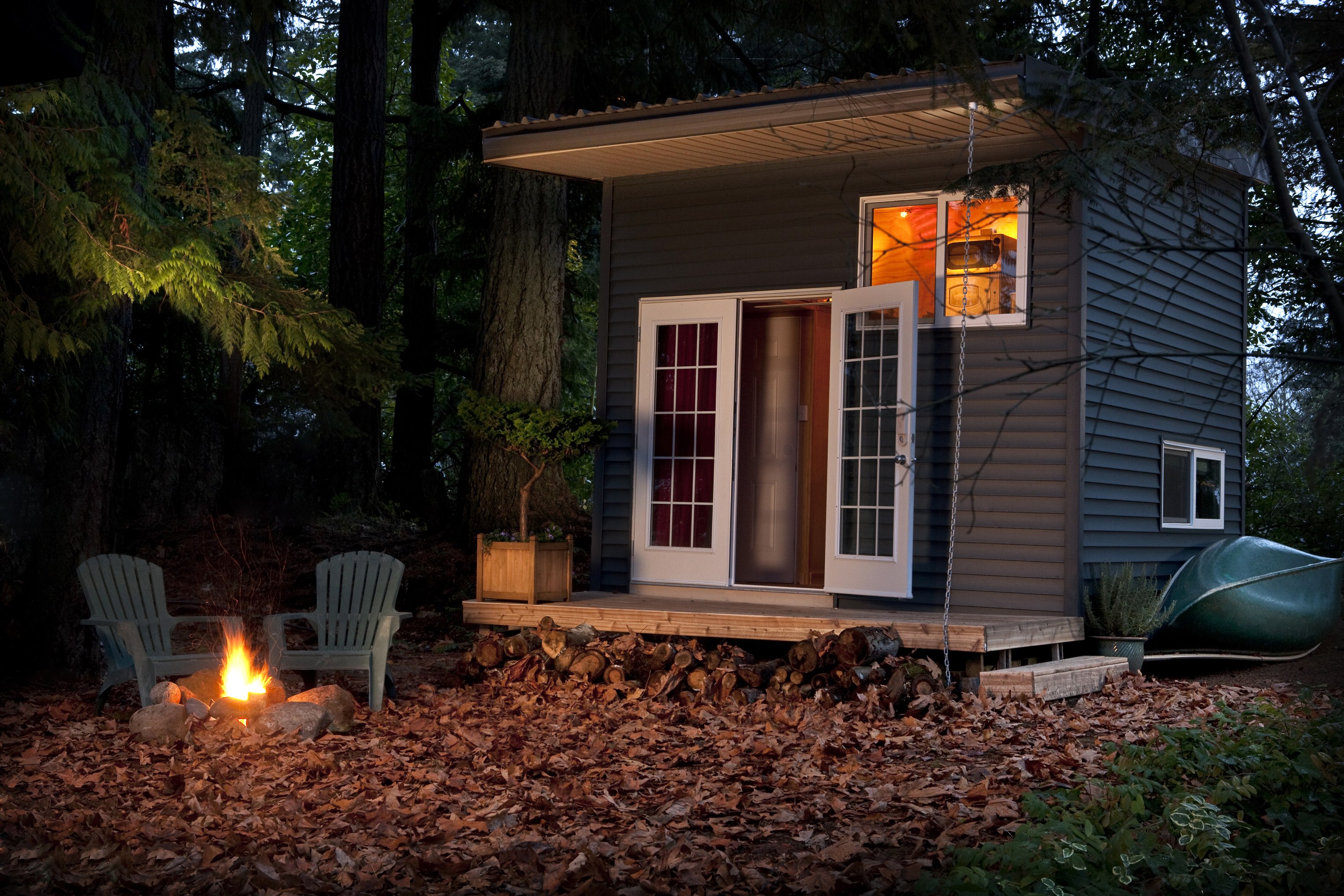
Treasure Trail House Can you heat a 2,500-square-foot house for under $100 per year? This comfortable, heritage-style BuiltGreenTM house includes high insulation levels and passive solar design features that dramatically reduce the cost of ownership. Built with Structural Insulated Panels (SIPs) and 24/7 Heat Recovery Ventilation, its annual heating costs are expected to be less than $100 per year.
Vancouver Island University Faculty of Management Centre The Faculty of Management Centre is Vancouver Island University's most environmentally sound and technologically advanced building of the institution and the first building to be Leadership in Energy and Environmental Design (LEED®) certified.
The electrical consumption of this facility is more than 30% efficient than a conventional building by conserving more than 356,000 kilowatt-hours of electricity through the use of energy-efficient lighting fixtures and occupancy sensors. The natural gas consumption is almost 40% more efficient than a conventional building which is saving the equivalent of 340,000 kilowatt-hours through a Direct Digital Controls system (DDC) allowing the heating and cooling systems to be controlled and monitored through a computerized energy management system to optimize the buildings energy performance. Through the use of water-efficient washroom and shower fixtures, this building saves 1,077,000 liters of water per year compared to a similar building of conventional design and construction.
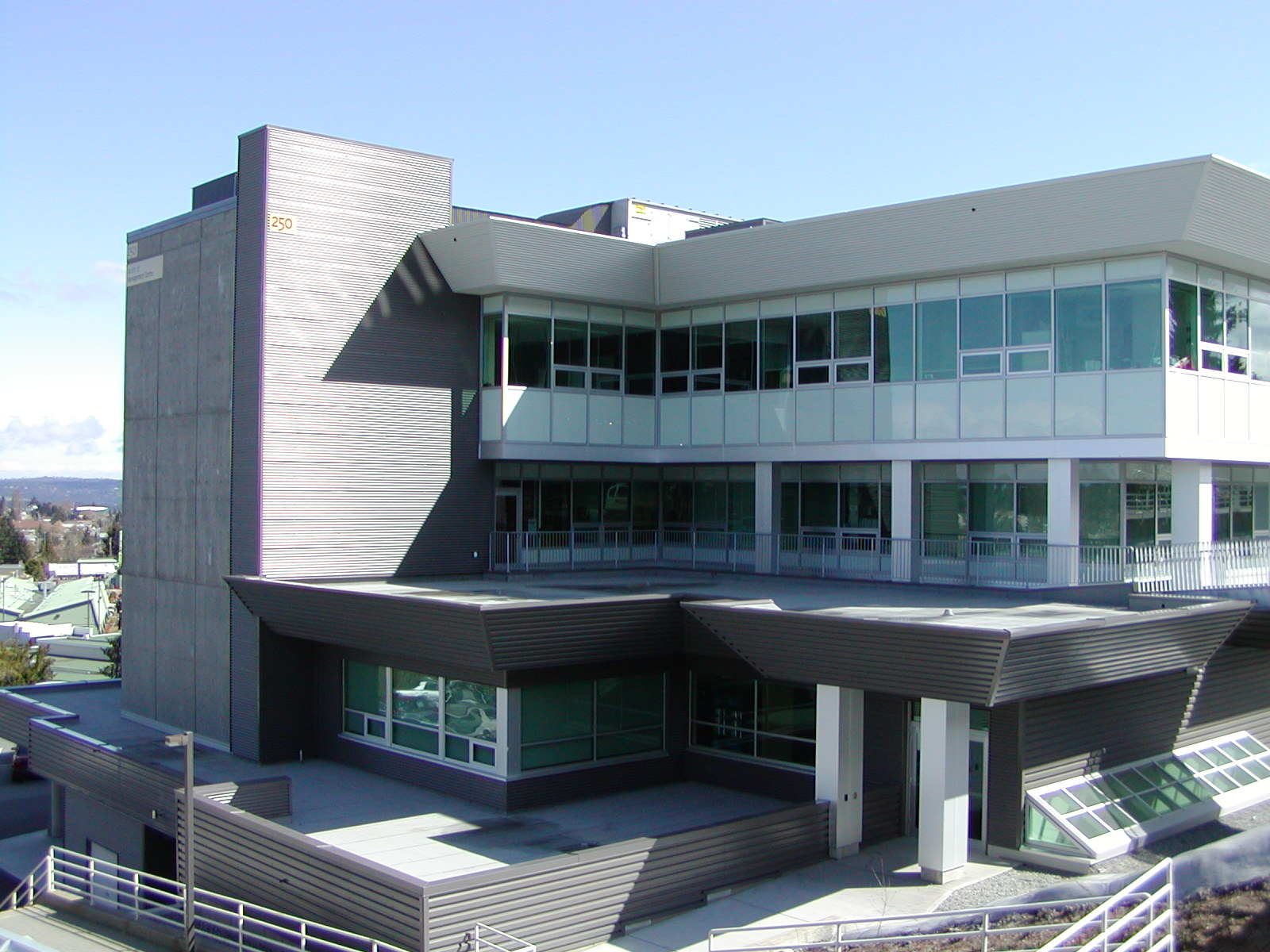
Pacific Gardens Cohousing Pacific Gardens Cohousing is Nanaimo's first and only cohousing project. This is a resident-planned development in a beautiful location with an emphasis on community, cooperation and quality of life. The shared facilities and physical design of this project support community connection and foster sustainable behaviours. Many site planning and building design decisions are made to minimize environmental impact on the site, encourage on-site food production, and make living in a compact community safe and enjoyable.
Anderson Residence Jack Anderson, a passionate green home designer of three decades offers up his own residence for viewing. The home continues to evolve as time and finances permit the continued integration of new green design principles and systems. The home was developed with a strong emphasis on passive solar gain, natural lighting, energy and water conservation and food production options. The home is surrounded by emerging permaculture gardens and protection of the adjacent natural habitat of the Nanaimo River Riparian areas. The approx. 2,000 square foot, country-style, family home includes such features as; a two-story passive solar sunspace, an active solar hot water system, rainwater collection and garden irrigation system, a grey-water recycling system, a full rooftop garden and a number of other subtle features he will be happy to passionately explain. His home-based design studio fronts the property and provides a venue for the many innovative green home and community scale projects that he and his Greenplan team continue to develop for communities on the island.
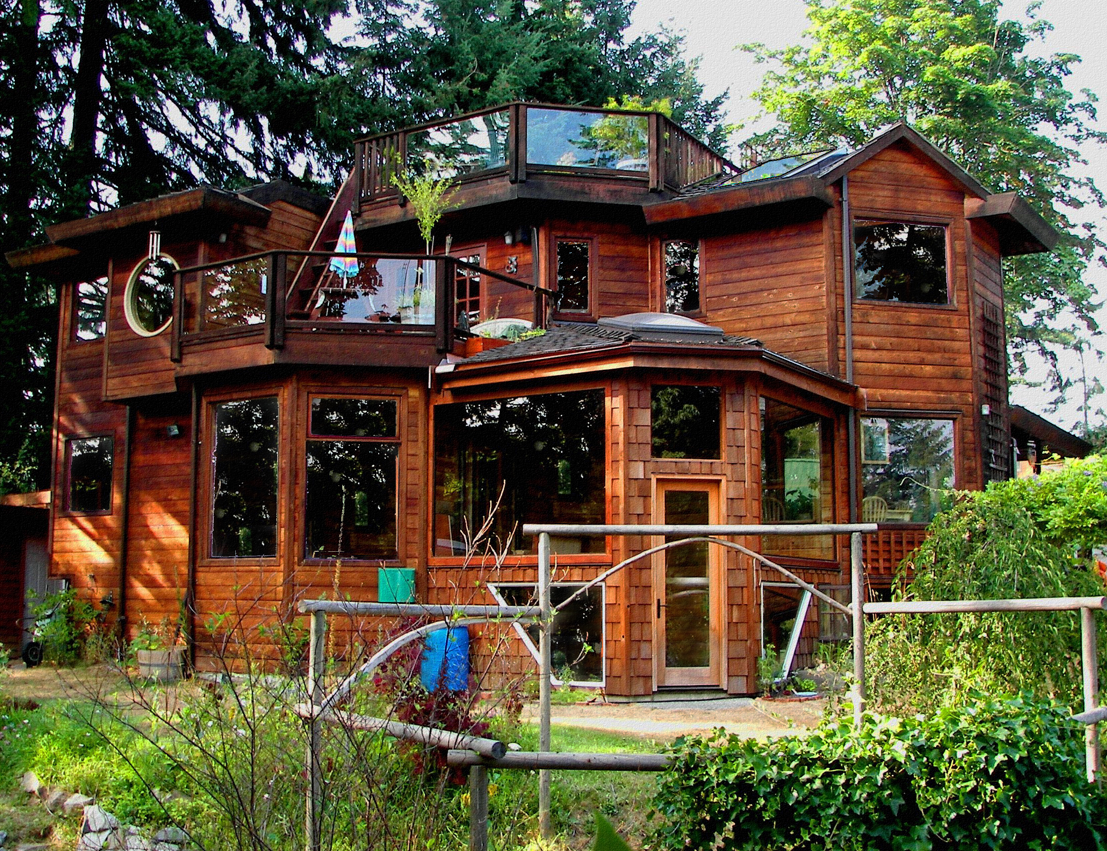
RainCoast Homes Cob Houses This house is a design-built energy-efficient home that utilizes many natural and locally sourced materials. The project incorporates passive solar design strategies and features a solar hot water system, grey water reuse, suspended earthen floors, living roofs, earthen plasters and two unique super-insulating exterior wall systems.
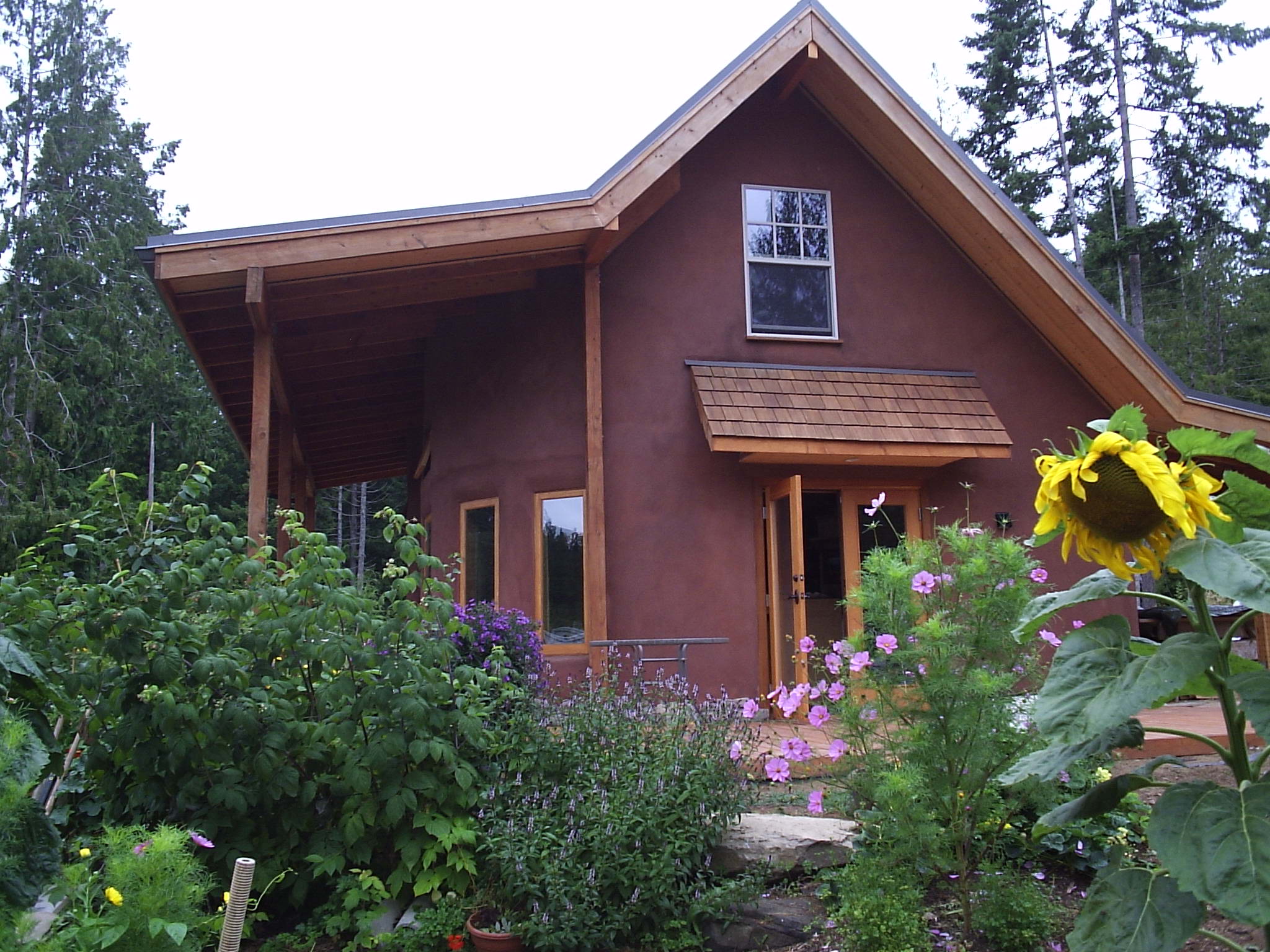
Oyster Way House This house is a post and beam construction with straw bale and light straw clay infill finished with lime plaster. The orientation and passive solar design allow this house to take full advantage of the southern solar exposure to naturally condition the interior space. The use of local natural materials and finishes not only reduces the environmental impacts associated with the manufacture and transportation of construction materials but also creates a healthy indoor environment.
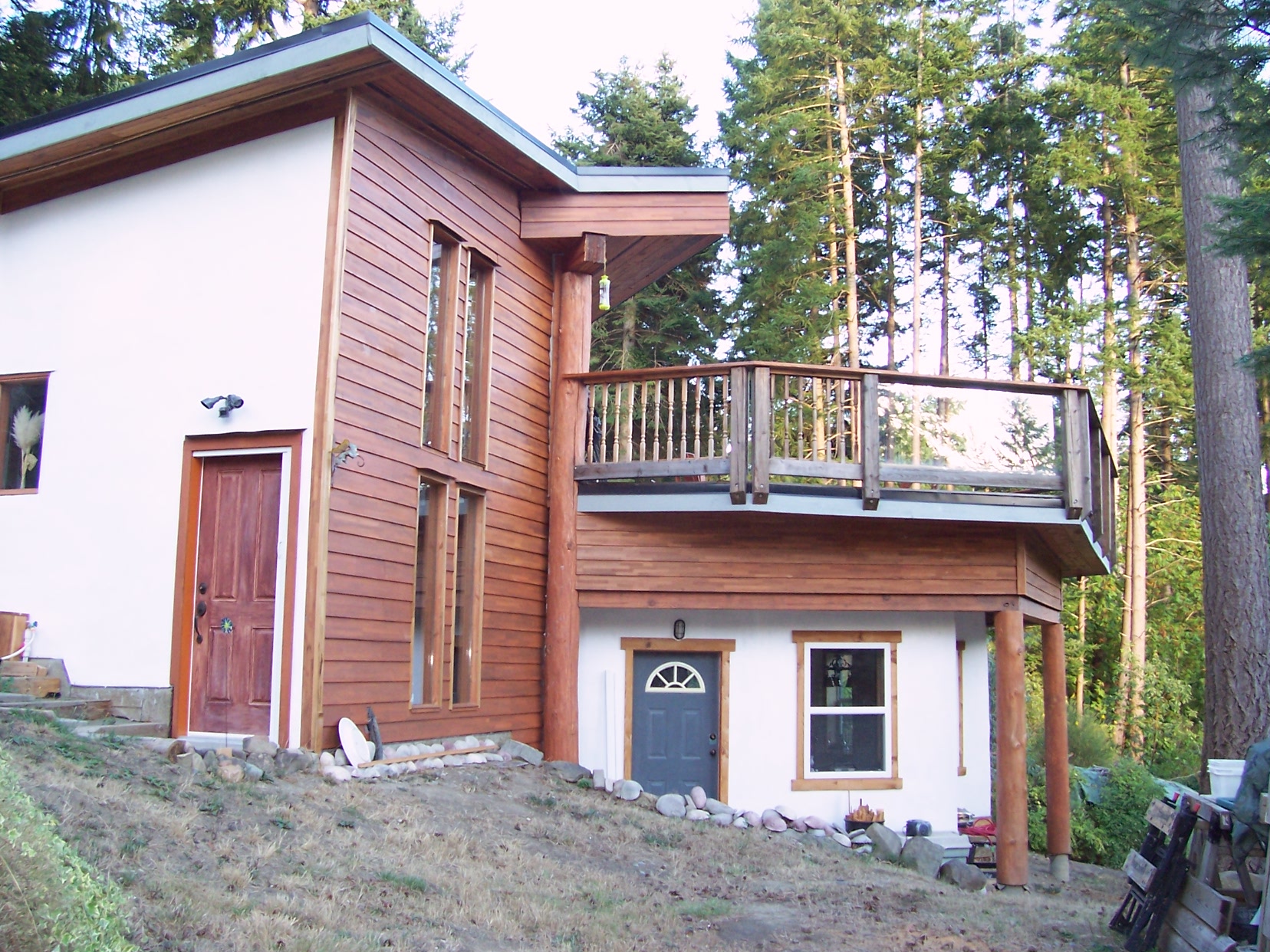
Millstone River House The passive solar design optimizes the performance of this house, minimizing heat loss in winter and heat gain in summer. The foundation and walls are constructed of Insulated Concrete Form (ICF) blocks, achieving insulation values up to R-24. With the additional assistance of a Structural Insulated Panel (SIP) roof system, the operating energy cost of this house is expected to be reduced by 45 to 60 per cent. In-floor radiant heating and natural ventilation increase overall comfort and improve indoor air quality. The in-home monitoring system allows real-time observation and control of comfort level and energy consumption room by room. This house aims to achieve BuiltGreenTM Platinum certification.
For more information, please contact B. Gallant Homes www.bgallanthomes.com or email info [at] bgallanthomes.com (info[at]bgallanthomes[dot]com).
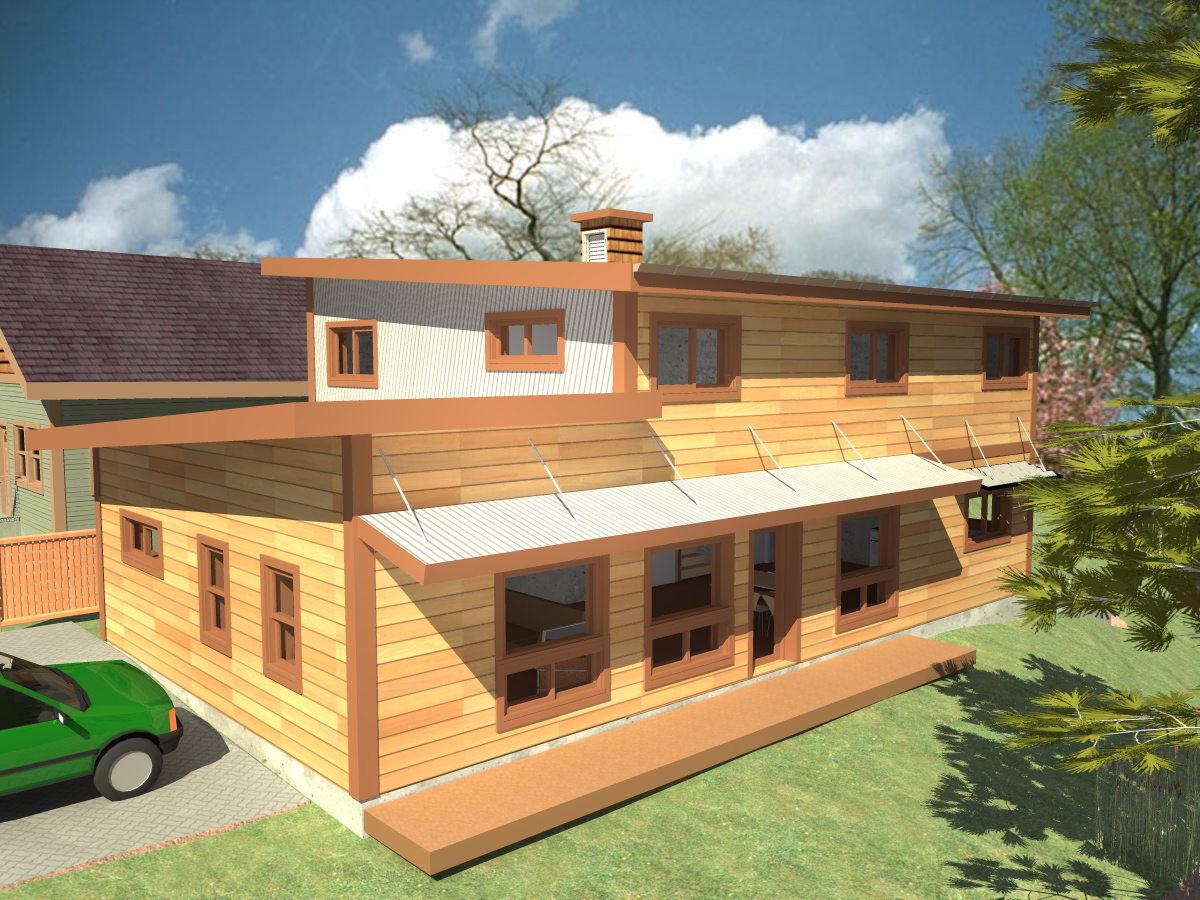
Stewart Street House This 1,700 sf house, developed on a triangular 3,000 sf corner lot in Nanaimo, conserves energy by heating, cooling, lighting and ventilating itself naturally year-round without relying on mechanical systems. The building envelope is designed to provide exceptional insulation values, acoustical properties and air tightness. The house incorporates a passive solar system that preheats outdoor air before it is delivered through a heat recovery ventilation system. The ventilation system circulates fresh air and exhausts stale air in and out of every room and is driven by a passive wind turbine. For more information, please contact designer Nathan Middleton through his email nemiddle [at] telus.net (nemiddle[at]telus[dot]net).
